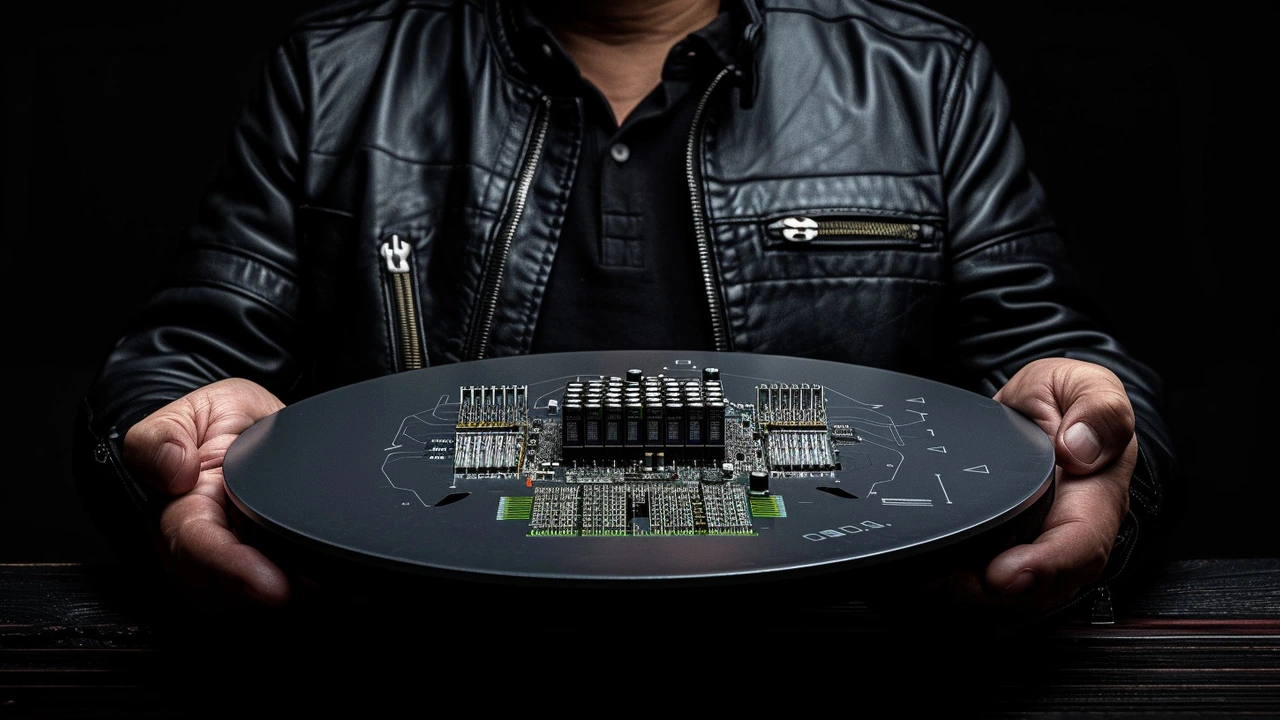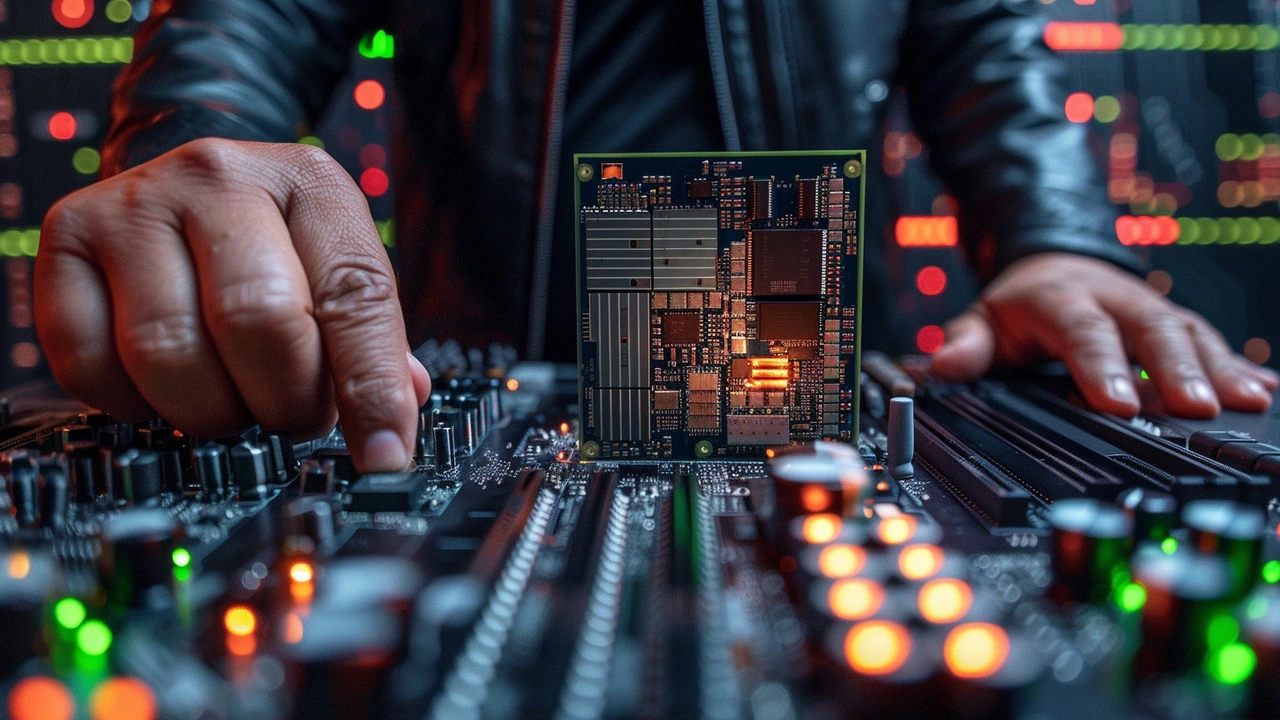In the early '90s, a trio of visionary individuals—Jensen Huang, Chris Malachowsky, and Curtis Priem—set out to revolutionize the tech world. With modest beginnings, they founded Nvidia in 1993, focusing initially on the burgeoning video game market. Boy, did they hit the jackpot. Their dream was to develop computer chips that could handle more detailed and immersive graphics for video games. It was a risky bet, but they believed in it. They decided on the name Nvidia by cleverly combining 'next version envy' with the Latin word for envy, an indication of their desire to create something enviable and futuristic.
In the subsequent years, Nvidia grew steadily, driven by a passion for innovation and excellence. The company invested significant resources into creating better and more powerful graphics processing units (GPUs). This was exemplified when Nvidia went public in 1999, a move that provided them with the financial muscle to scale operations. Their GeForce graphics card, a product that was unveiled around the same time, gained massive traction in the gaming community. Gamers fell in love with it, especially for titles like Quake, which required heavy graphics rendering. This milestone was just the beginning of Nvidia's transformation from a fledgling startup to a global powerhouse.
The leap from startup to industry leader was facilitated by Nvidia’s relentless pursuit of technological excellence. The launch of the GeForce graphics card series marked a significant turning point. These cards were immensely popular in gaming circles, enhancing the overall gameplay experience with superior graphics and processing capabilities. Gamers couldn't get enough of it. However, the company's definitive breakthrough came when it struck a deal to become the exclusive graphics provider for Microsoft's Xbox console in 2000. This partnership was a testament to Nvidia's growing influence in the gaming sector and marked a key milestone in its journey. This development was also highly symbolic of Nvidia’s potential to reach beyond just PC gaming and into mainstream entertainment systems.
The success of the GeForce series didn't go unnoticed. Other tech firms began to recognize the superior capabilities of Nvidia's GPUs. Their prowess wasn't just limited to games; Nvidia's technology had the ability to perform complex and sophisticated computing tasks more efficiently than traditional CPUs. This versatility positioned Nvidia as a powerful player in various other domains as well.

As the 2010s rolled in, Nvidia took a significant gamble by venturing into the nascent field of artificial intelligence (AI). Realizing that their GPUs could handle intense processing tasks required by AI models, Nvidia began marketing their products to various tech industries. They made strategic investments in AI research and development, betting heavily on its future potential. It was a gamble, though—a huge one. But sometimes, risks pay off. AI was a field filled with promise and potential, but it was still largely unexplored. Nvidia's decision to dive headlong into this space was bold and unconventional, yet it proved to be one of the best decisions they ever made.
In the years that followed, Nvidia's GPUs became indispensable tools for AI research and deployment. Tech giants like Google, Amazon, and Meta adopted Nvidia's hardware for their AI projects, further solidifying the company's position in the market. This strategic pivot toward AI catapulted Nvidia into new realms of profitability and prestige. By focusing on AI, Nvidia enabled advancements in various sectors, including automotive, healthcare, and finance. Car companies like Tesla even began integrating Nvidia's technology into their autonomous driving systems, demonstrating the breadth and depth of Nvidia's capabilities.
Fast forward to the present day, and Nvidia's calculated risks and relentless innovation have paid off beyond anyone's expectations. As of recent months, Nvidia's market valuation has skyrocketed to over $3.3 trillion, surpassing tech behemoths like Microsoft and Apple. This remarkable achievement is a testament to the company's successful foray into AI and other innovative technologies.
Jensen Huang, the co-founder, and CEO, has seen his personal net worth balloon to over $119 billion, reflecting the company's immense success. Nvidia's dominance in the AI market has made its hardware a staple in countless tech ecosystems around the world. From data centers to autonomous vehicles, Nvidia's influence is unmistakable and pervasive.

Nvidia's meteoric rise isn't just a corporate success story; it has far-reaching implications for various industries and the global economy at large. The company's innovations in AI are shaping the future of technology, influencing how data is processed, analyzed, and utilized. Their GPUs are now critical components in the infrastructure of many tech giants, paving the way for new advancements and discoveries.
Looking ahead, Nvidia's prospects seem boundless. With continued investments in AI, machine learning, and other cutting-edge technologies, the company is poised for even greater achievements. The tech world eagerly watches as Nvidia continues to push the envelope, setting new standards for innovation and excellence.
In conclusion, Nvidia's journey from a small startup focused on video game graphics to the world's most valuable company is nothing short of remarkable. Through visionary leadership, calculated risks, and technological brilliance, Nvidia has reshaped the landscape of modern computing. As they continue to explore new frontiers, one can only imagine the innovations and breakthroughs that lie ahead.
Write a comment